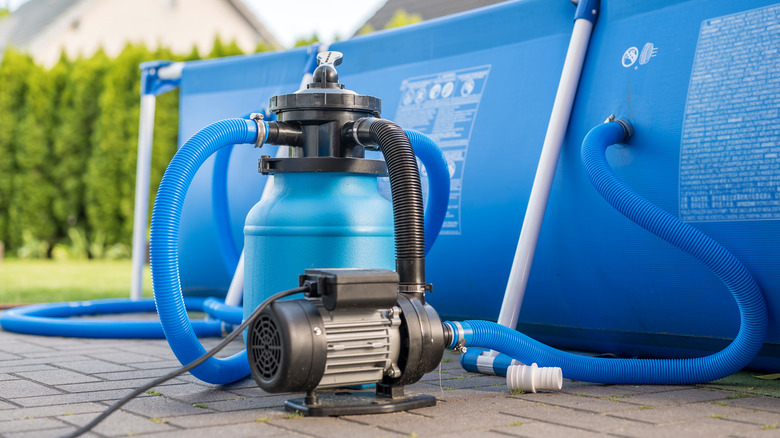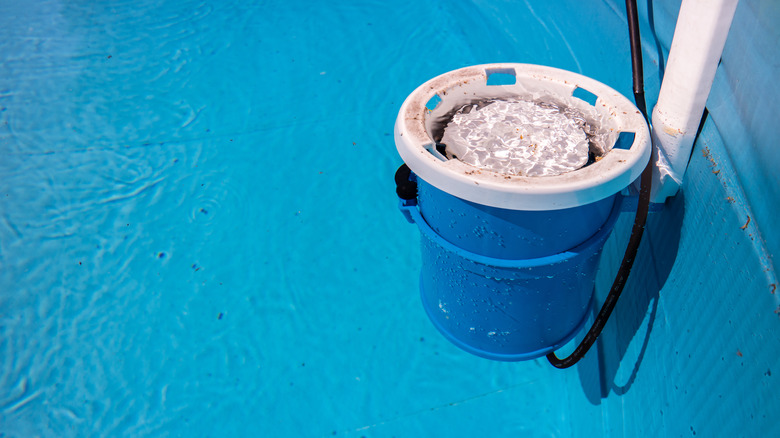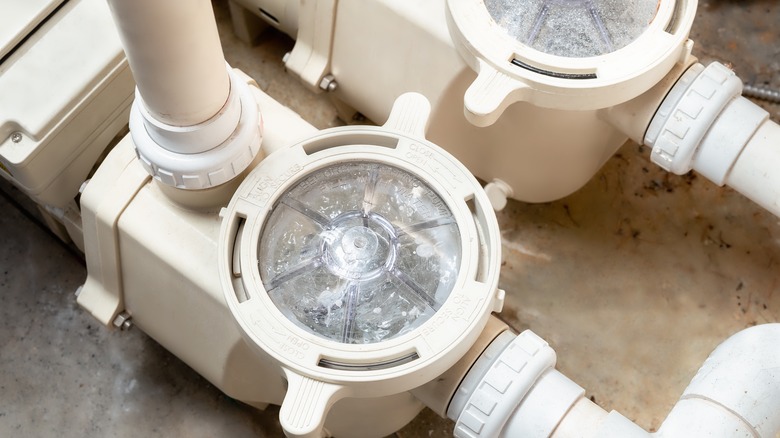Should You Change Your Pool's Filter Before Using It This Summer?
As the days get warmer, we'll be ready to put away the extra blankets and crank up the AC. It's almost time for barbecue days with friends, soaking up the sun, and jumping in the pool. However, before opening up your pool for the summer, there are some maintenance items that need your attention. For example, you should check the filter and decide whether to change it. Three types of pool filters — sand, cartridge, and Diatomaceous Earth (DE) filters — work differently to reach the same goal. Since each filter is distinct from the others, they have specific requirements that will let you know if you should change them before using your pool.
Sand filters are tanks filled with sand that are connected outside of the pool. Water flows through the tank and the sand collects the particles and debris. The filter then pushes back clean water. The Diatomaceous Earth filter or DE filter uses grids covered in powder derived from sedimentary rock to filter water. These powder coated grids are able to catch even tiny particles in the water. If you had your sand or DE filter cleaned in the fall, you should be able to leave it in place without further maintenance. Cartridge filters use a simple cloth material to filter and hold debris. They should be cleaned more often.
How to know if your filter needs changing
If you've never cleaned or changed your pool filter, then you'll definitely want to get a jump start on it now. Each filter has a lifespan of a few years, so sometimes you can get away with backwashing instead of replacing it. Backwashing is an easy process where you filter the water backward so that it comes out through the drain instead of being returned to the pool. Doing this releases all the waste and debris that has gotten stuck in the filter.
A sand filter has three to five years of life. The first couple of years are the strongest for sand filters; after that, they start getting too much buildup that eventually permanently clogs the filter. So, if your sand filter is in its third year, it might be time to change it. DE filters typically last for four to five years, but if their grids are well taken care of, that will extend their life span up to 10 years. Once the grids get damaged through tears, though, the diatomaceous earth retreats to the pool's bottom. You'll need to change the filter if you notice a grey or white powder at the pool's base. Lastly, a filter cartridge can last between three to five years, however, you should clean the cartridge every six months to keep the filter in pristine condition. If you notice changes in the water clarity, it's time to change the cartridge.
Check the pump pressure weekly
Once you start using your pool, checking the pump pressure weekly is vital. If the pressure is too high, your filtration system will stop working. In addition, it can create blockages since it's working harder to push out the dirty water and replace it with clean water. To avoid replacing the filter, especially if it's in good condition, check the pressure gauge weekly to ensure it's at the correct level. Also give the pressure gauge a thorough inspection; any cracks or damages indicate that you need a new one. By including a pump pressure checkup in your pool maintenance, you'll avoid having any issues with your filtration system and keep it in perfect condition.
If your pump is not holding a steady amount of pressure, replacing it can cost between $150 to $800 (via Orange Leaf Pool Care), depending on the type you need. Once you check the status of your pump, move on to the filter to check if it's still filtering the water properly. If the pump pressure increases, you'll need to deep clean the filter because of the debris and chemicals that have clogged it. Cartridge cleaners can be installed to help extend the life of your pool cartridge filter by keeping it cleaner for longer. Of course, it will still get dirty after time and need to be replaced, just not as often.


